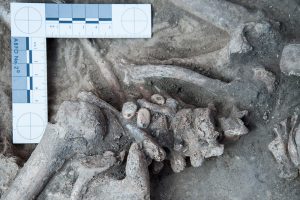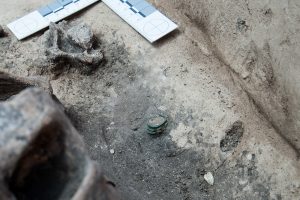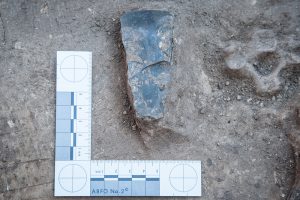Archaeologists conducting excavations at a construction site of a speedway near Szczepanowice, southern Poland, discovered a well-preserved multiple burial. The grave contains the remains of four people and numerous artefacts of the Corded Ware culture, dated to the 3rd millennium BC.

The grave, dug in loess, consists of the entrance, followed by a narrow corridor that ends at the wide burial chamber. At the moment of discovery the burial was in almost intact condition. Inside the chamber remains of four people were found: a man, woman and two children. The bodies were laid in a North-East – South-West orientation. The adults’ feet were facing the feet of the children.

According to the archaeologists, the man was between 44 and 50 years old at the moment of death. His bones bear numerous signs of healed contusions he suffered during life, as well marks of double trepanation. The children were between 8-9 and 12-13 years old at the moment of death. According to the anthropologists Agata Hołuszko, their life ended violently as they were probably ritually killed to follow the adults into afterlife. Further specialist analysis are scheduled to confirm the blood relationship between the buried.

Numerous artefacts were found by the remains. There were clay amphorae and beakers, stone axes and hatchets, four flint arrow points in the grave, along with a set of tools made from bone and antlers as well as bone and metal jewellery. The weapons and tools were found by the male and the copper and bone jewellery by the female and child skeleton.

The dating of the burial was established to 2500 BC, to the Chalcolithic period that followed the Late Neolithic Age and preceded Early Bronze Age. According to the archaeologists, the pottery ware from the grave is of local production but the copper earring indicates wider trade contacts between the prehistoric communities.

(after Nauka w Polsce & maksym Mackiewicz)